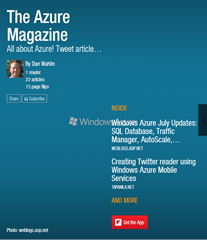Tales from the Trenches – Building a Real-World Silverlight Line of Business Application
There's rarely a boring day working in the world of software development. Part of the fun associated with being a developer is that change is guaranteed and the more you learn about a particular technology the more you realize there's always a different or better way to perform a task.
I've had the opportunity to work on several different real-world Silverlight Line of Business (LOB) applications over the past few years and wanted to put together a list of some of the key things I've learned as well as key problems I've encountered and resolved. There are several different topics I could cover related to "lessons learned" (some of them were more painful than others) but I'll keep it to 5 items for this post and cover additional lessons learned in the future. The topics discussed were put together for a TechEd talk:
- Pick a Pattern and Stick To It
- Data Binding and Nested Controls
- Notify Users of Successes (and failures)
- Get an Agent – A Service Agent
- Extend Existing Controls
The first topic covered relates to architecture best practices and how the MVVM pattern can save you time in the long run. When I was first introduced to MVVM I thought it was a lot of work for very little payoff. I've since learned (the hard way in some cases) that my initial impressions were dead wrong and that my criticisms of the pattern were generally caused by doing things the wrong way.
In addition to MVVM pros the slides and sample app below also jump into data binding tricks in nested control scenarios and discuss how animations and media can be used to enhance LOB applications in subtle ways. Finally, a discussion of creating a re-usable service agent to interact with backend services is discussed as well as how existing controls make good candidates for customization.
I tried to keep the samples simple while still covering the topics as much as possible so if you’re new to Silverlight you should definitely be able to follow along with a little study and practice. I’d recommend starting with the SilverlightDemos.View project, moving to the SilverlightDemos.ViewModels project and then going to the SilverlightDemos.ServiceAgents project. All of the backend “Model” code can be found in the SilverlightDemos.Web project. Custom controls used in the app can be found in the SivlerlightDemos.Controls project.
Subscribe to my Free FlipBoard Magazines: | ||||
 |  |  |  |  |

![image_418B5BFB1_47FBF5721_75802FD51_32D30289[1] image_418B5BFB1_47FBF5721_75802FD51_32D30289[1]](https://aspblogs.z22.web.core.windows.net/dwahlin/Media/image_418B5BFB1_47FBF5721_75802FD51_32D302891_66055791.png)